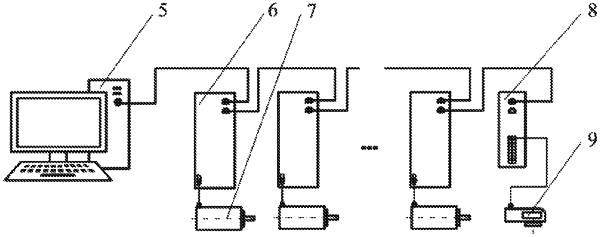| CPC B23K 26/34 (2013.01) [B23K 26/032 (2013.01); B23K 26/32 (2013.01)] | 3 Claims |

|
1. A system for controlling overlapping in single-layer laser cladding of a shaft-like workpiece, comprising:
a processor is configured for obtaining a shaft diameter of the shaft-like workpiece to be processed, a feed rate of a feed shaft and a laser cladding width; obtaining a calculation formula of an overlapping rate of a single-layer laser cladding, wherein the overlapping rate of the single-layer laser cladding is a ratio of a width of an intersection of two cladding layers to a width of a single cladding layer; planning a motion of the feed shaft and a motion of a spindle based on a rotational velocity of the spindle and an S-curve acceleration and deceleration planning algorithm which comprises steps of calculating a total time required for the spindle and the feed shaft to reach respective preset velocities, calculating a feed velocity of the feed shaft to obtain acceleration time of the spindle and to obtain acceleration time of the feed shaft, and comparing the acceleration time of the feed shaft and the acceleration time of the spindle;
determining whether the acceleration time of the spindle is equal to the acceleration time of the feed shaft; if yes, calculating a displacement of the feed shaft; otherwise, determining whether the acceleration time of the spindle is greater than the acceleration time of the feed shaft; if yes, after the feed shaft accelerates to a preset velocity, keeping the feed shaft at the preset velocity for a period of uniform motion until the spindle reaches the preset velocity; otherwise, re-planning a motion of the spindle according to S-curve acceleration and deceleration; adding a period of uniform acceleration motion for the spindle or reducing a maximum jerk of the spindle to make the acceleration time of the spindle equal to the acceleration time of the feed shaft; and calculating a total displacement of the feed shaft; and
adjusting an initial zero position of a laser head in a feed direction according to a difference between the total displacement of the feed shaft and a preset clamping allowance.
|